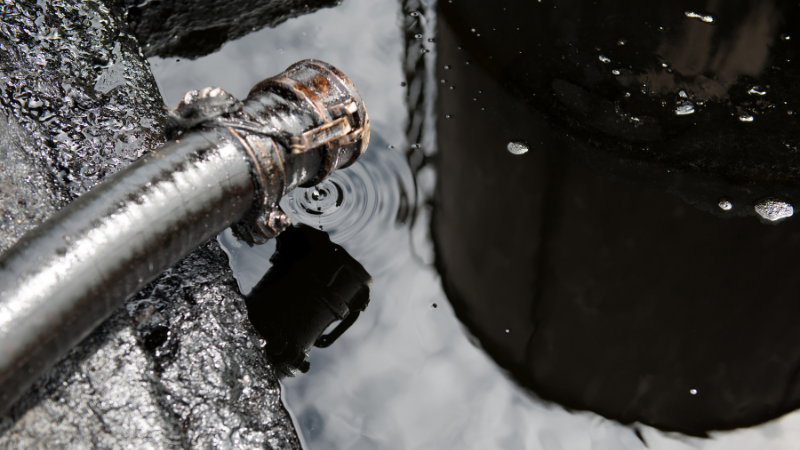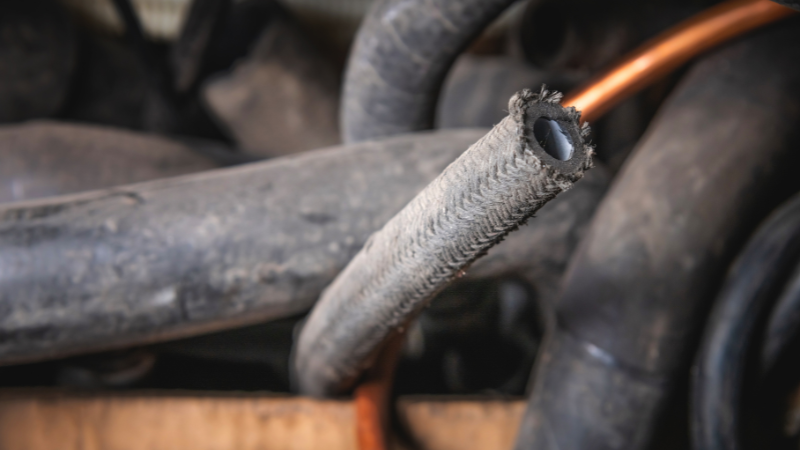Hydraulic Hoses: Expert Winter Care Tips for the Construction Industry
November 11, 2024

Winter is almost here, and while most industries might slow down, construction doesn’t stop when the temperatures drop! Cold weather can wreak havoc on hydraulic systems, turning hoses brittle and causing them to crack, while thickened fluid puts extra pressure on connections.
But don’t worry—here’s everything you need to know to keep your hydraulic hoses (and your project) in top shape through winter’s harshest conditions.
Start with the Right Hose
Not all hydraulic hoses are built for cold weather construction. Freezing temperatures can increase the risk of leaks, bursts, and hose failure, putting your crew and project at risk. Here’s how to choose hoses ready to endure the toughest winter jobs:
Low-Temperature Rated Hoses: Opt for hoses designed to stay flexible at -40°F or lower. Look for keywords like low-temp, cold-resistant, and winter-rated on hose specs to ensure they can handle exposure to freezing temperatures.
Flexible, Resilient Materials: Cold-weather-ready hoses are often made from synthetic rubber or thermoplastic, which stay supple when standard rubber would turn rigid and crack. These materials ensure hoses are safe to use even in sub-zero environments.
Reinforced Construction: Multi-layered hoses handle internal pressure better, preventing winter wear and tear. Reinforced hoses can better withstand the added pressure of thickened hydraulic fluid that comes with colder temperatures.
Pro Tip: Check your hose specs—if it’s not rated for extreme cold, it’s time to upgrade to winter-ready hoses. Better hose performance means less downtime and fewer job site interruptions!
Browse our range of hoses and fittings here.
Switch to Cold-Weather Hydraulic Fluids
The right hydraulic fluid is just as crucial as the right hose. In winter, fluid viscosity changes—leading to thicker, slower-moving fluid—which can damage your equipment and decrease efficiency. Here’s what you need to know:
Low-Viscosity Fluids: Low-viscosity fluids keep your hydraulic system flowing, even when it’s freezing out. The fluid moves more freely, reducing pressure on hoses and fittings.
Synthetic Hydraulic Oils: These are engineered to maintain their fluidity across a wider temperature range. Synthetic oils are ideal for hydraulic machinery facing high pressures and temperature swings, making them well-suited for winter construction projects.
Pro Tip: Switch to a winter-specific hydraulic fluid as temps drop. It’s a simple change that can prevent winter hose stress and keep your equipment in top shape.
Wrap It Up! Protect and Insulate Your Hoses
On-site winter construction is hard on equipment, but there are ways to shield hoses from the elements and extend their life. Here’s how:
Insulate with Hose Sleeves: Thermal wraps act as a cozy coat for hoses, helping prevent freeze damage. They also reduce wear from snow and ice buildup, which can damage exposed hoses.
Use Heated Hoses for Extreme Cold: If your project faces prolonged sub-zero temperatures, consider heat tape or heated hoses to keep the hydraulic system flowing smoothly.
Warm Up Gradually: Let the system run at low power for a few minutes. This warms the fluid and prevents a sudden jolt to the hoses, which could lead to cracking or bursting.
Prevent Snow and Ice Buildup: Snow and ice can create problems for hydraulic systems, especially if water seeps into connections. Regularly clear hoses of snow and avoid letting equipment sit in snow banks to protect from freezing and expansion damage.
Pro Tip: Avoid sharp bends and excessive flexing in cold weather, as this can weaken the hose and lead to cracks or leaks, particularly in construction equipment that requires heavy, repetitive motion.
Routine Winter Maintenance for Construction Equipment
In winter, frequent maintenance is crucial for heavy-duty construction equipment. A robust maintenance plan prevents breakdowns and project delays.
Inspect Connections and Fittings: Cold weather can cause fittings to contract and loosen, increasing the chance of leaks. Tighten and check connections often to avoid pressure drops.
Regular Crack Inspections: Cold can cause hoses to crack, especially when exposed to high pressures. Aim for daily inspections in particularly harsh weather conditions.
Keep Spare Parts Handy: Winter construction is prone to failures, so having extra hoses and fittings on-site can prevent long delays. With Pirtek’s easy access to parts, you can order online or stop by our service counter to ensure you’re prepared for on-the-spot repairs.
Pirtek’s preventative maintenance services are tailored for construction professionals. Our on-site inspections and regular maintenance plans are designed to extend the life of your hydraulic hoses and systems, especially under winter’s extreme conditions.
Conclusion
Winter is tough on hydraulic equipment, but it doesn’t have to be. By winter-proofing your system, you can keep productivity up all season. Here’s your quick winter checklist:
- Low-temp rated hoses
- Cold-weather hydraulic fluid
- Thermal insulation and wraps
- Gradual system warm-ups
- Routine maintenance and inspections
- Spare hoses and parts on hand
By preparing your equipment for winter, you’ll keep your construction site moving smoothly, even when temperatures dip. Avoid delays, protect your machinery, and keep productivity strong all winter long!
Get in Touch with Pirtek Today
At Pirtek, we’re committed to supporting the construction industry year-round, especially when the elements are at their harshest. From expert preventative maintenance to 24/7 emergency repairs, our team is here to help you overcome winter’s challenges.
Contact us today to learn more about how our services can keep your construction projects on track and your equipment performing reliably, no matter how cold it gets!
Have Any Questions?
Get in touch with our team today.
- 0151 725 6777
- help@dynamichydro.co.uk



